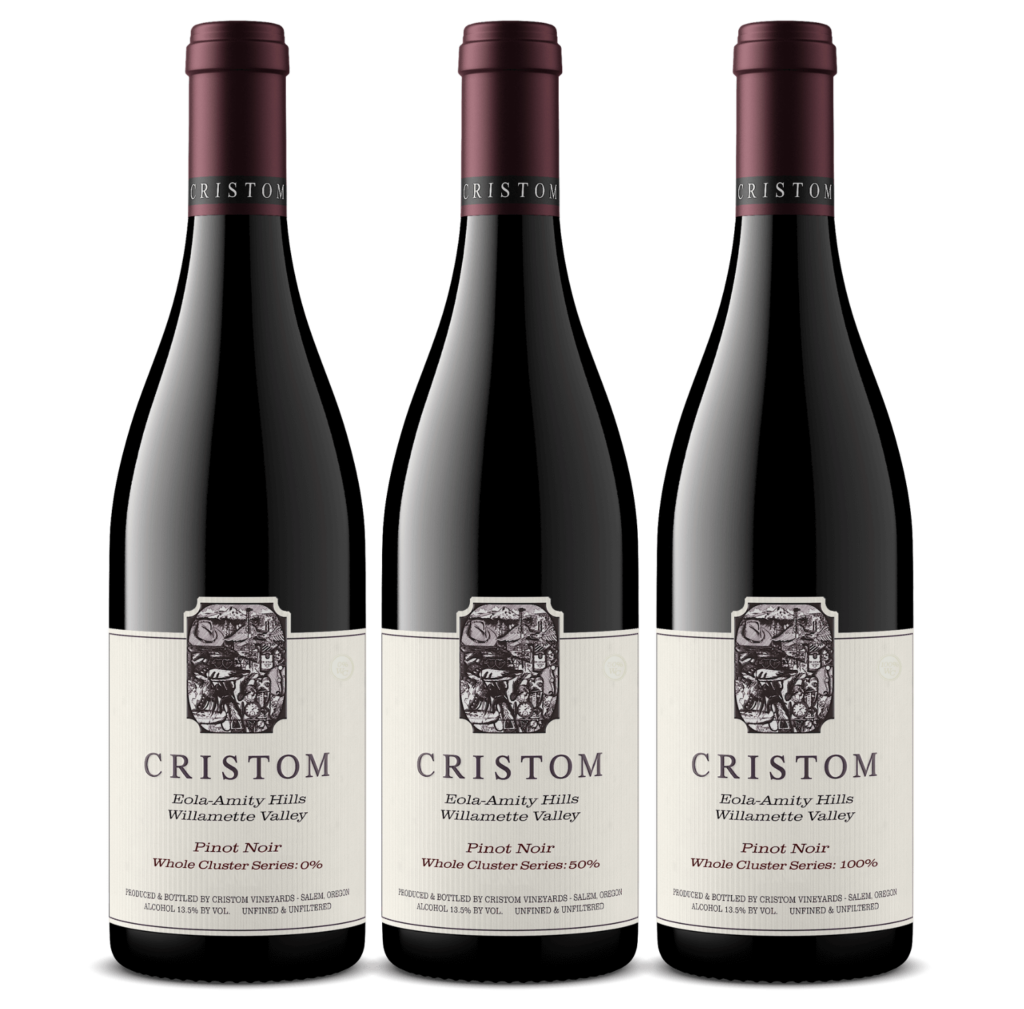WHOLE CLUSTER FERMENTATION: ANOTHER DIMENSION OF TANNIN
A FOURTH DIMENSION OF TANNIN
SKIN, SEED, OAK, AND STEM.
Hand drawn graphic artwork throughout courtesy of Matt Vuylsteke
That special time of year is approaching. Currently, our team is racking for our upcoming August bottling. “This marks the beginning of Harvest in many ways as it makes room for the next vintage in the cellar,” remarks Winemaker & Vineyard Manager Daniel Estrin. Plans are being made, and Whole Cluster is a hot topic.
WHOLE CLUSTER FERMENTATION 101
Hand-picked grapes come into the winery as “whole bunches.” In the winemaking process, fruit is often “destemmed” before fermentation begins. Whole cluster fermentation is the practice of leaving grapes attached to their stems (also known as “jacks”) throughout the fermentation process. This choice alters the chemistry, tannin level, and the resulting aromas, flavors, and texture.

The process of whole cluster fermentation
Winemaking with whole bunches is making wine with great intention. The use of whole clusters elevates the aromatic complexity with lifted spice notes and adds another dimension of tannin, providing enriched texture and length while deepening terroir expression.
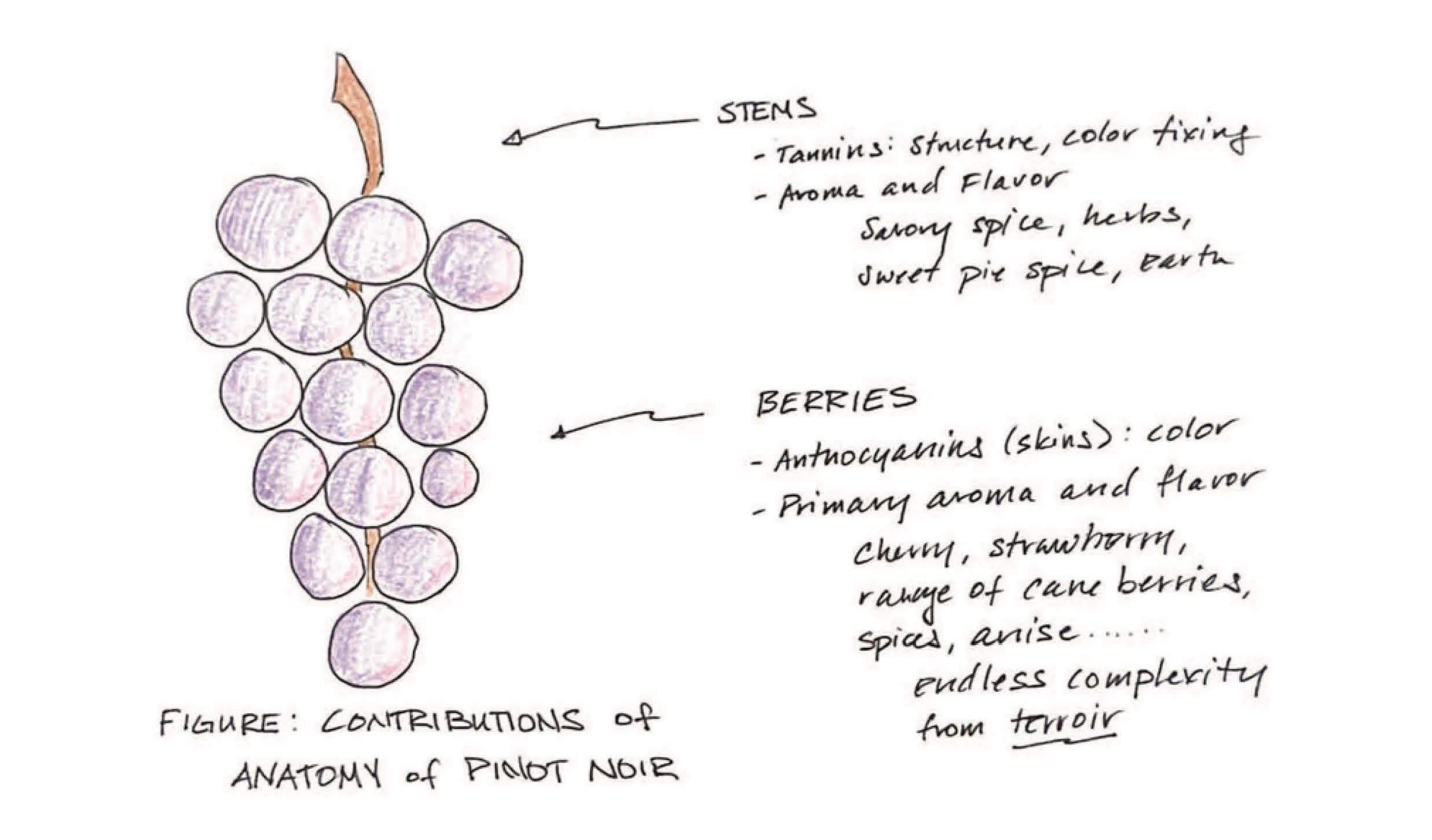
What do stems & berries contribute?
WHOLE CLUSTER USAGE IN WINEMAKING
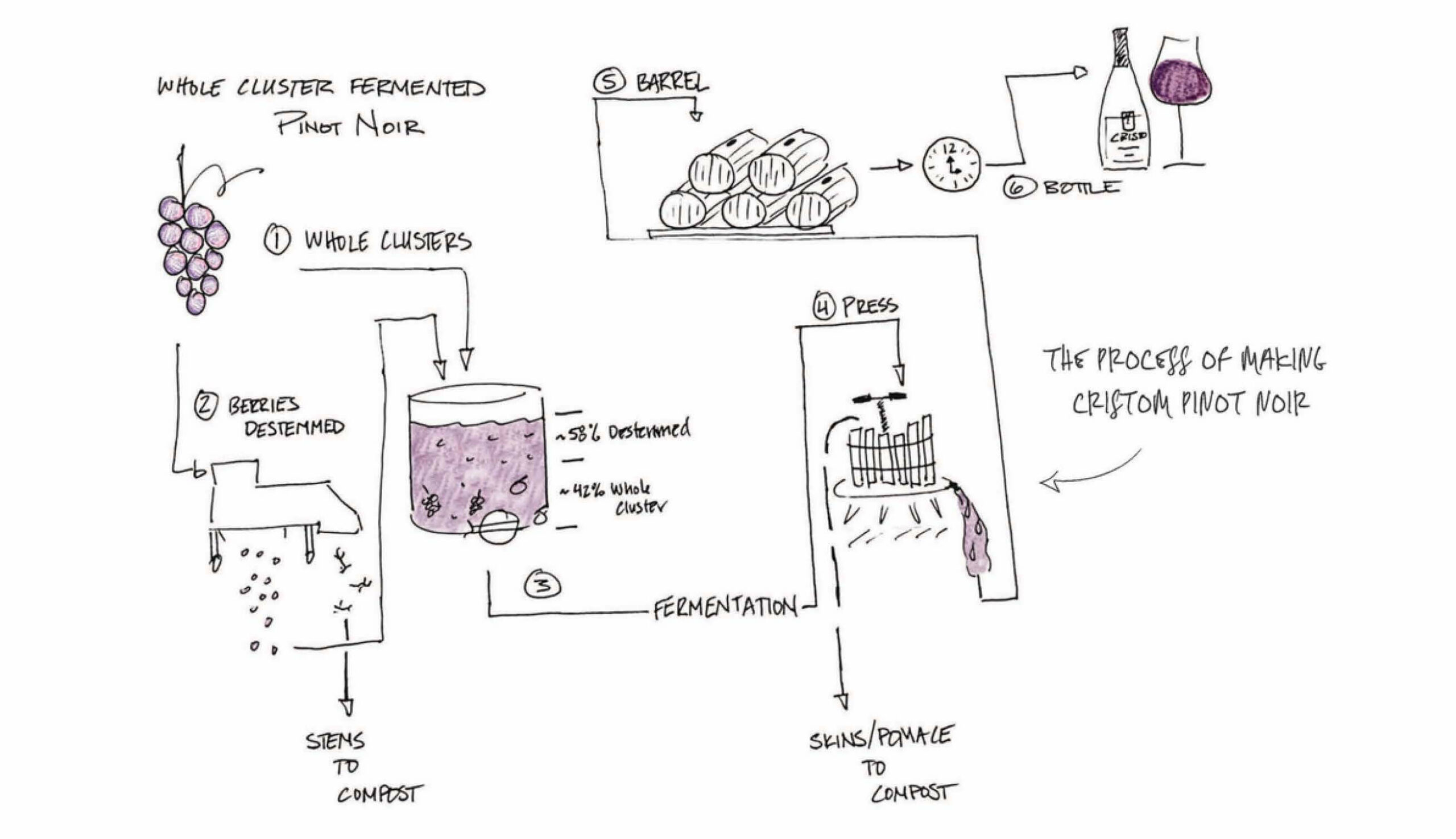
Cristom Pinot Noir winemaking process
The ratio of whole cluster use depends on the farming, soil type, rootstock, clone combinations, acid levels, vintage, and empirical knowledge. Our holistic farming practices help to produce balanced fruit with healthy cluster sets, which is crucial to whole cluster usage.

The shallow volcanic soils on our site yield fruit with smaller, looser clusters and lower yields, so we use fewer whole clusters in fermentation to balance the skin-to-juice ratio. The deeper volcanic soils on our estate provide a fuller fruit set with bigger berries. That fruit intensity and a higher skin-to-juice ratio can handle more whole cluster bunches in fermentation. Additionally, the fruit grown in these soils has higher acid levels, which is crucial to whole-cluster fermentation.

Volcanic soil types on Cristom Estate
The growing season during the vintage is also key to the ripeness of the stem (lignification). Vintages with more hang time allow greater use of whole cluster fermentation. For the 2022 vintage, we had near-perfect conditions for bloom in late June, which yielded a generous fruit set of tight clusters and large berries. The long, warm, sunny summer extended the growing season into October, providing the perfect circumstances for greater whole-cluster inclusion.
Additionally, our dedicated winegrowing team of 16 men and women, who average over nine years on our farm, and our Winemaker and Vineyard Manager, Daniel Estrin, have intimate knowledge of the vineyards.
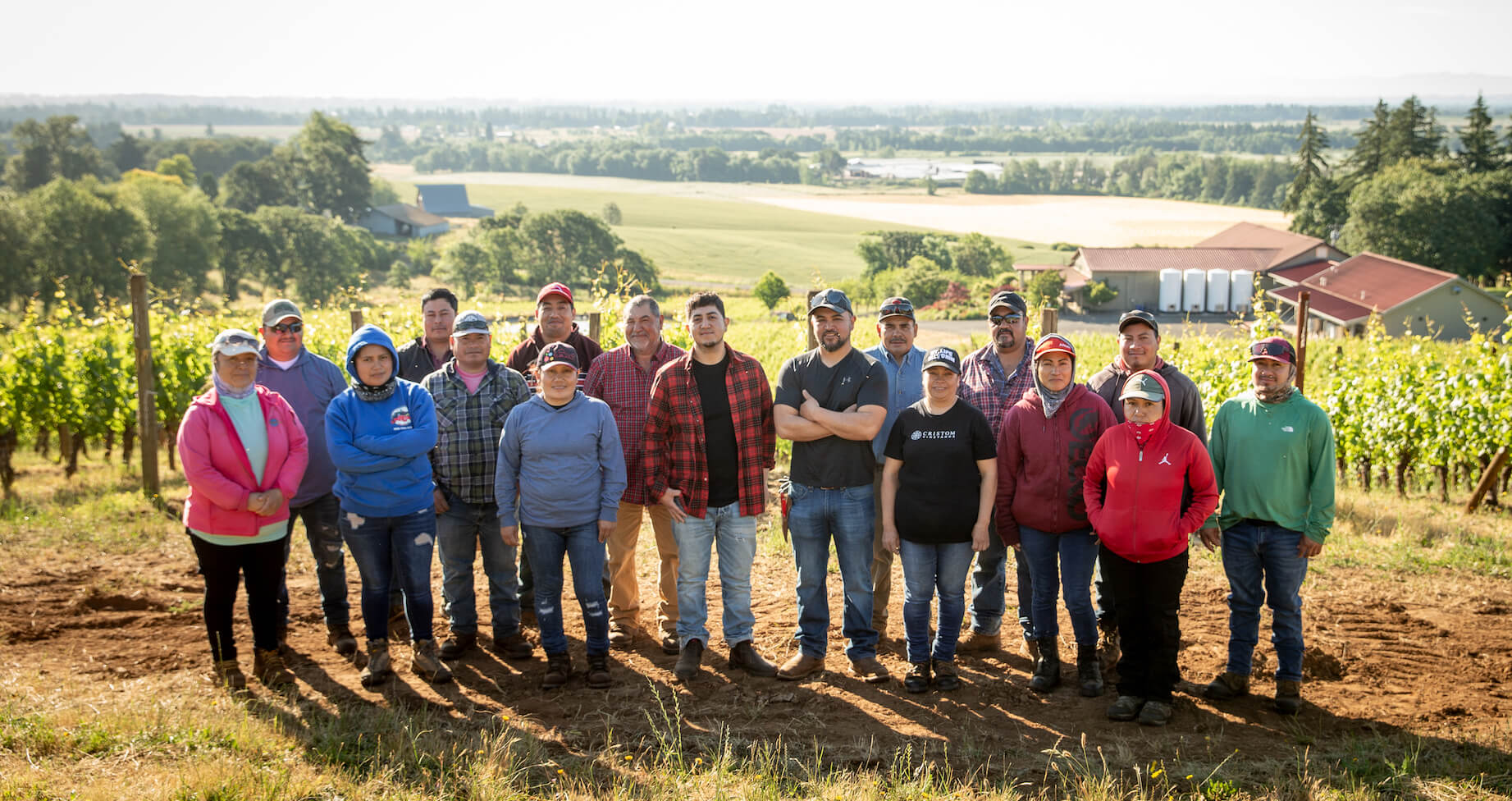
Dedicated Cristom Vineyard Team
Our choice to include whole bunches depends on the specific site, the growing season, and the age of the vines, though it typically results in 40%-50% whole clusters in final blends.

Cristom Pinot Noir fermenter activity
WHOLE-CLUSTER HALLMARKS
“Whole cluster winemaking is part of the foundation, part of the life blood of who we are as a brand and a company, and it’s been a part of our winemaking style from the get-go.”
-Owner & Winegrower, Tom Gerrie
Cristom is a pioneering practioner of whole cluster and native yeast fermentation in the US along with unfined and unfiltered wines.
Early in Cristom Winemaker Emeritus Steve Doerner’s career, he was a protégé of Josh Jensen, founder of Calera Winery, an early pioneer of creating truly Burgundian-style Pinot Noir and Chardonnay in the Central Coast of California. Josh Jenson arranged for Steve Doerner to travel to Burgundy to stay with Jacques Seysses of Domaine Dujac in Morey-Saint-Denis, France. This trip shaped Doerner’s winemaking philosophies and ultimately built the framework of Cristom’s winemaking style today—a low-intervention approach guided by patience and the use of natural yeasts and whole clusters to express distinctive single vineyard sites.
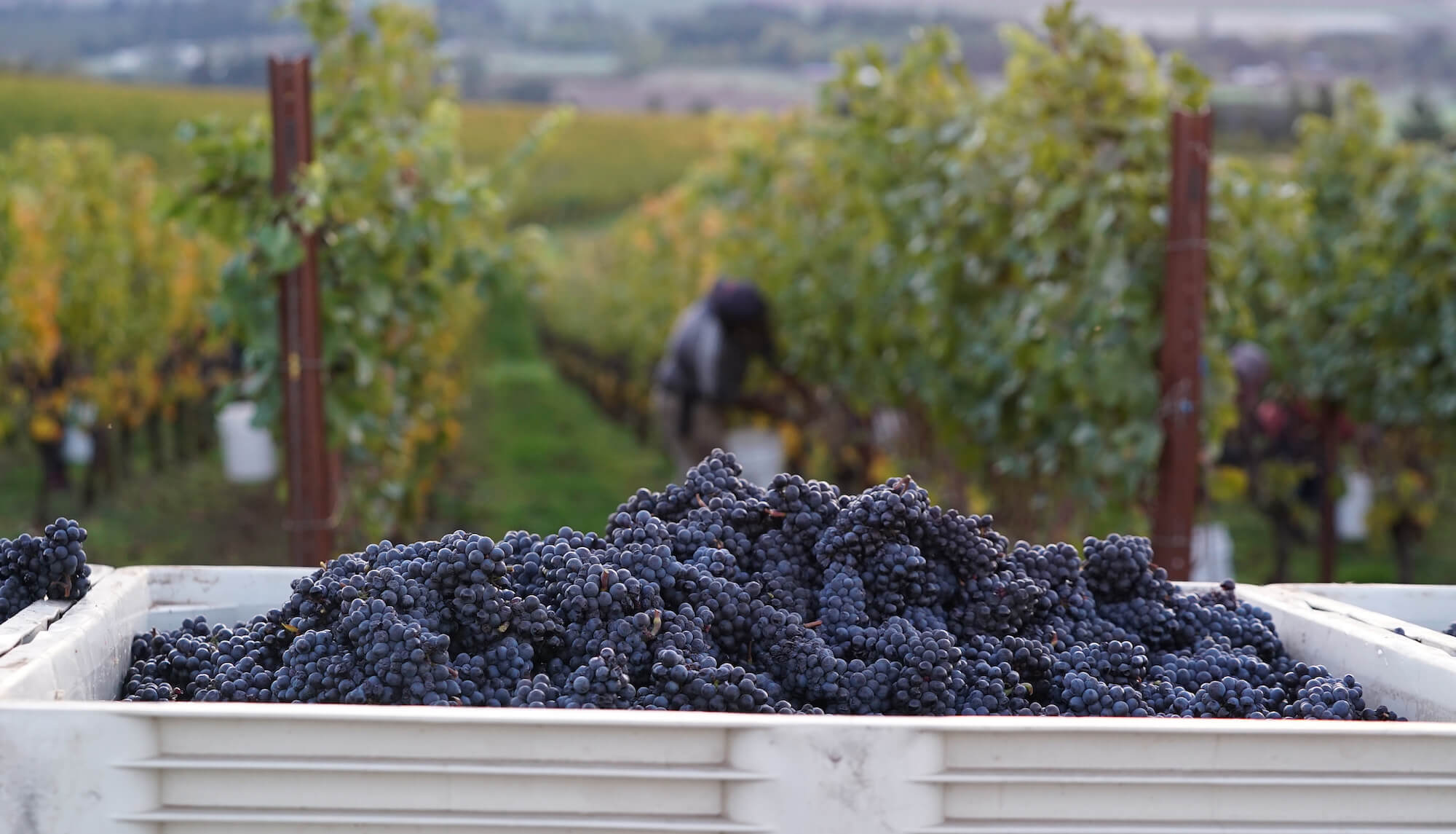
“One of the things we talk about is sort of a fourth dimension of tannin. There’s skin tannin, seed tannin and then new wood provides oak tannin. The use of whole clusters in fermentation introduces a fourth dimension of tannin. The stem tannin can be fairly pronounced.
It’s very, very long.
It’s very textured.
It has a great deal of weight.
So it gives it a great deal of length to the Cristom wines.”
-Owner & Winegrower Tom Gerrie
WHAT DOES WHOLE CLUSTER FERMENTATION BRING?
We welcomed the Whole Cluster Series as an educational opportunity to discuss the intention behind our Craftsmanship and the ‘Why?’ behind it all. This series shows why Whole Cluster fermentation is such an important piece of our history as a family-owned company. Whole cluster fermentation is an expression of the site, the vintage, and how the vines set that year- enhancing the expression of place and time.
The series debuted with the 2021 vintage. Moving forward with the 2022 and 2023 vintages, you continue to taste how the varying levels of stem inclusion in winemaking manifest on the nose and the palate. The series continues to represent three fermentations, all from the same block of our estate Louise Vineyard, with one important variable isolated: varying levels —0%, 50%, and 100% —of whole clusters in a fermenter.
On the nose, you’ll pick up savory and spicy aromatics and secondary and tertiary characters of mushroom and forest floor.
What do the different bottlings represent?
0% Whole Cluster Pinot Noir: represents all destemmed berries and showcases the purity of the fruit with high-toned red fruit character and bright acidity
50% Whole Cluster Pinot Noir: allows the fruit character to show, enhanced by the additional tannin characters from the whole cluster, typical of Cristom’s style
100% Whole Cluster Pinot Noir: the expanded tannin showcases the power and intense structure of the wine with steeped black tea characters
These wines can easily be enjoyed on their own, but the series also makes for an interesting and lively conversation with friends and family when you compare all three together, especially when blind tasting!
Download the Tasting Mats for a comparative experience:




